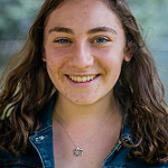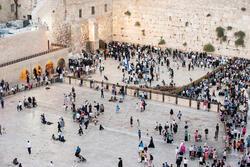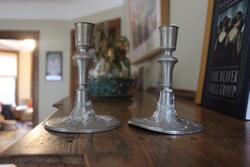Leaving My Liberal Bubble
“No, Phoebe, we have to go to this side.” That’s what I heard when I went to my first Chabad service. My whole life I had gone to egalitarian services with my dad, who was a Hillel director and regularly led services both at Hillel and as a lay service leader at our synagogue. I’d joined him on the bimah, and as I got older, helped him lead more and more of the service.
Because of my upbringing, the gender separation at my cousin Zoe’s bat mitzvah came to me as a shock. Why couldn’t I stand with my dad and all my male cousins? Why wasn’t Zoe reading Torah like all the other girls I knew did at their bat mitzvah services?
These were only a few of the questions I had as I sat through this service.
To Zoe, this model is simply what a Bat Mitzvah is: her dad reads the Haftorah, and she makes a speech. But, outside the synagogue, Zoe and I live very similar Jewish lives. We both come from families that actively participate in Jewish ritual and ceremony, that are conscious of Kashrut, although not to the extent that we never eat out. We both have two parents who work outside of the home, we both enjoy going to Disneyland with our extended family, and we both attend Jewish summer camp. But, the differences in how our two families practice Judaism are significant, and difficult for me to process from a feminist viewpoint.
I never discussed this experience with Zoe, but at least at the time of her Bat Mitzvah, her lack of involvement in the service didn’t seem to bother her. It was the way she was brought up; but, because of the way I was brought up, it irked me.
As I mentioned before, I’d always gone to synagogue every Saturday morning with my dad. I was used to a big open room where men and women sat together, a bimah in the front, and an ark with the Torahs from which anyone could read. Every Sunday, I sat in a classroom full of boys and girls and prepared for a Bat Mitzvah where I knew I’d stand on the bimah and read from the Torah alongside my parents.
The idea of feminism had never occurred to me as a nine-year-old girl from Iowa City, but whether I knew it or not, I grew up in quite a feminist environment. I lived in a liberal bubble in which I watched my mom and dad equally provided for my family; I had female family friends who owned businesses, and I knew lots of families with stay-at-home dads or with two moms.
Zoe’s Bat Mitzvah opened my eyes to the fact that not every community is like mine, and not every young girl’s upbringing is like mine. My cousin’s Chabad community in San Diego operates differently from my other cousins’ Conservative community in Edmonton and Reform community in Michigan, and especially from my small pluralistic community in Iowa City.
I suddenly saw that not every woman is allowed to read Torah. Not every woman is allowed to wear what she wants. Not every woman has the freedom and equality that I’ve always enjoyed.
After this experience, I started to notice more inequalities. Neither of my grandmothers had worked outside of the home since my parents were born. While my last name is hyphenated to equally represent my mom and dad, most kids only go by their dads’ last names. As I entered junior high and high school, I learned about more serious gender inequalities such as the wage gap, and that women haven’t always been allowed to vote. I started noticing the difference in male and female culture at my Jewish summer camp.
The inherent gender inequality in Judaism has been both a blessing and a curse in my life. While it often causes me discomfort and anger, it has also opened my eyes to the realities of the world and has inspired my feminist spirit. I can trace my feminism back to the uneasiness I felt at that first Chabad service. For better or for worse, without Judaism, I wouldn’t be the feminist I am today.
This piece was written as part of JWA’s Rising Voices Fellowship.








Lovely reflection!